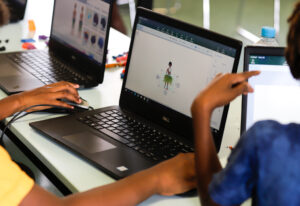If there’s one thing that 60,000 years of continuous culture should tell you, it’s that Aboriginal and Torres Strait Islander peoples know how to adapt to survive. From changes in seasons and environment, to food and other resource availability, to living through invasion, genocide, assimilation and ongoing racism, Aboriginal people have found ways to adapt and survive, and remain the oldest living culture on the planet. However, this doesn’t mean there hasn’t been losses along the way: land, sacred sites, language, and cultural practices are amongst the many things Aboriginal and Torres Strait Islander peoples have struggled to maintain – and in some instances lost altogether – over the past two-and-a-half centuries.
Aboriginal, Torres Strait Islander, and even some non-Indigenous peoples fight to preserve as much of our culture as possible. This is more than trying to ensure the next generation are able to connect to their culture; it’s about preserving our knowledge, wisdom, rites and traditions that have as much value in their application to the modern world as they do in providing historical lessons. While some progress is being made, much more can and needs to be done.
The advantage we have in today’s world is the rapid advancement technology has and continues to make. Using the tools available to us now – and in the not too distant future – we have the means and potential to not only preserve our culture, but to make it thrive.
Here are some immediate examples which come to mind:
The Connected World
The Digital Age (also referred to as the Information Age) has irreversibly change the world and the way we do things forever; the fact that you’re reading this right now attests to that. Over the last several years we’ve seen even more how we can use this technology to connect to one other, share ideas and information, and thrive in the face of adversity. As Aboriginal and Torres Strait Islander peoples and communities increase access to and embrace these technologies, the opportunities for us to maintain cultural connections, develop relationships and collaboration amongst ourselves and with non-Indigenous peoples, and ensure our participation at all levels of society. With online communication, ‘distance’ is a thing of the past, and information can be instantly accessible, as long as we put it out there. Some ideas for using this technology that come to my mind include:
- teleconferencing apps allowing a broad range of educational and knowledge sharing opportunities, from teaching and preserving cultural aspects such as language, song, art and dance to cultural sensitivity and safety training, to engagement, participation and representation in the public, commercial, industrial and government arenas. We are no longer limited by having to be physically present somewhere – we can access anywhere in the country, or the world for that matter;
- databases: big business and Governments have long known about and exploited the advantages of having large repositories of data – why shouldn’t we? Imagine being able to track and authenticate artwork or artifacts anywhere in the world, or putting your name and some personal information into a search and discovering which mob you belong to, or having an extensive library of our history and culture available anytime you wanted to call on it, for example to support Native Title or fishing rights claims, for example;
- connectivity: being connected means virtually anything can be accessible no matter how rural or remote we might be. Advances have already be made in the fields of telehealth and education which allow communities to access services at home they once would have had to travel far away from, or miss out altogether;
Augmented and Virtual Realities
Slow to advance but becoming more and more part of our world, AR and VR technologies have the potential to not only preserve our culture, but share it with the world. Imagine, for example:
- being able to visit significant sites (like ancient rock art) without having to be at or disturb the site;
- having your GPS tell you when you’ve crossed over into another nation’s land, whose land it is, and where culturally relevant services (like Land Councils and health services) can be found;
- being able to identify bush foods and medicines on location just by looking at them.
Artificial Intelligence
The future is here: AI is already helping many people and industries in their planning and decision making. Imagine, for example, teaching AI about the Aboriginal and Torres Strait Islander concepts of health, then using that knowledge combined with Big Data about all the aspects of health – not just medical information but housing, education, social justice, etc. – to make recommendations on how we can move towards a more equitable health system and Close the Gap.
These ideas represent a mere scratching of the surface of what’s possible and how we can use current and future technologies – even drive technological advancement – for the benefits of Aboriginal and Torres Strait Islander peoples. Of course there will be obstacles to overcome: logistics like infrastructure, accessibility and educational requirements to use this technology, as well as questions of ownership, permissions and scope of use, are immediate examples. However, if we embrace these advancements, meet the challenges of utilising them, and adapt them to our purposes, Aboriginal and Torres Strait Islander cultures could not only survive the next 60,000 years – it could thrive.
How do you think current or future technology could benefit the preservation of Aboriginal and Torres Strait Islander cultures? What are some projects you’re already aware of? Feel free to share your thoughts in the comments below.


